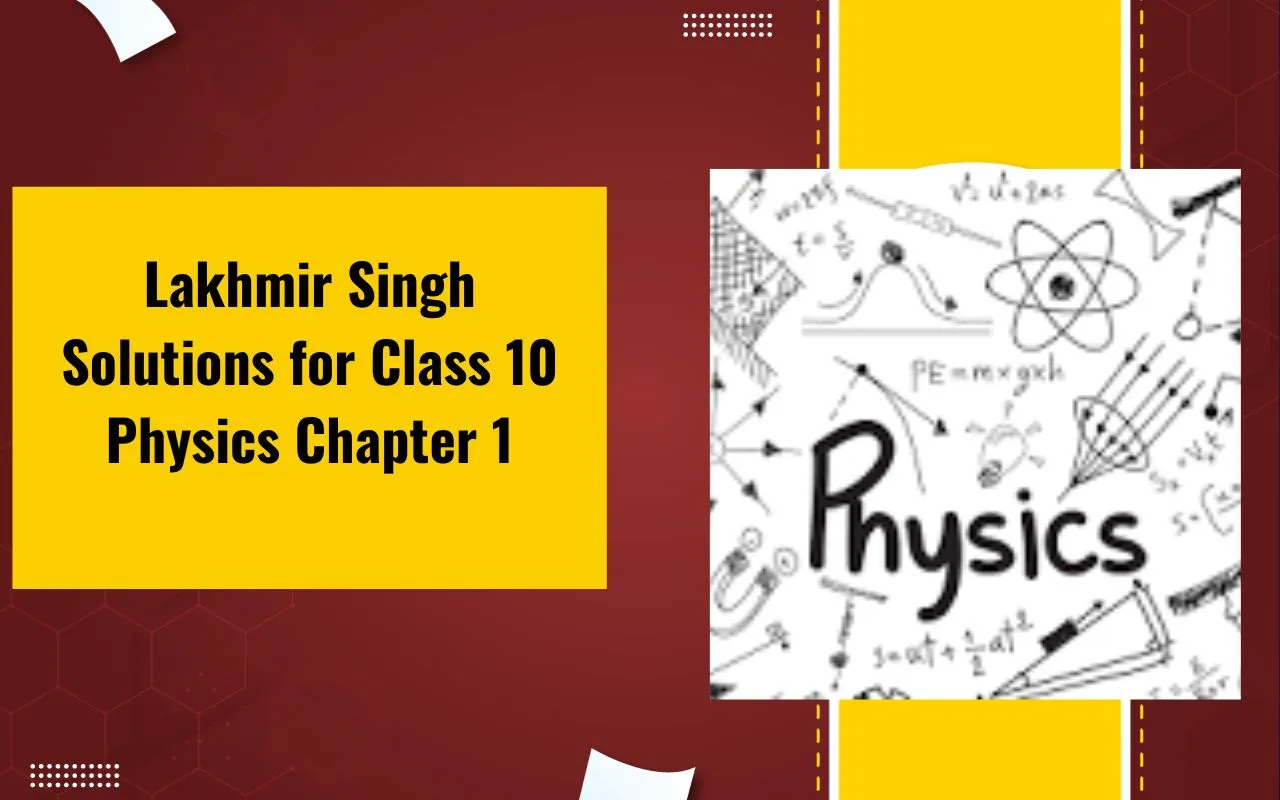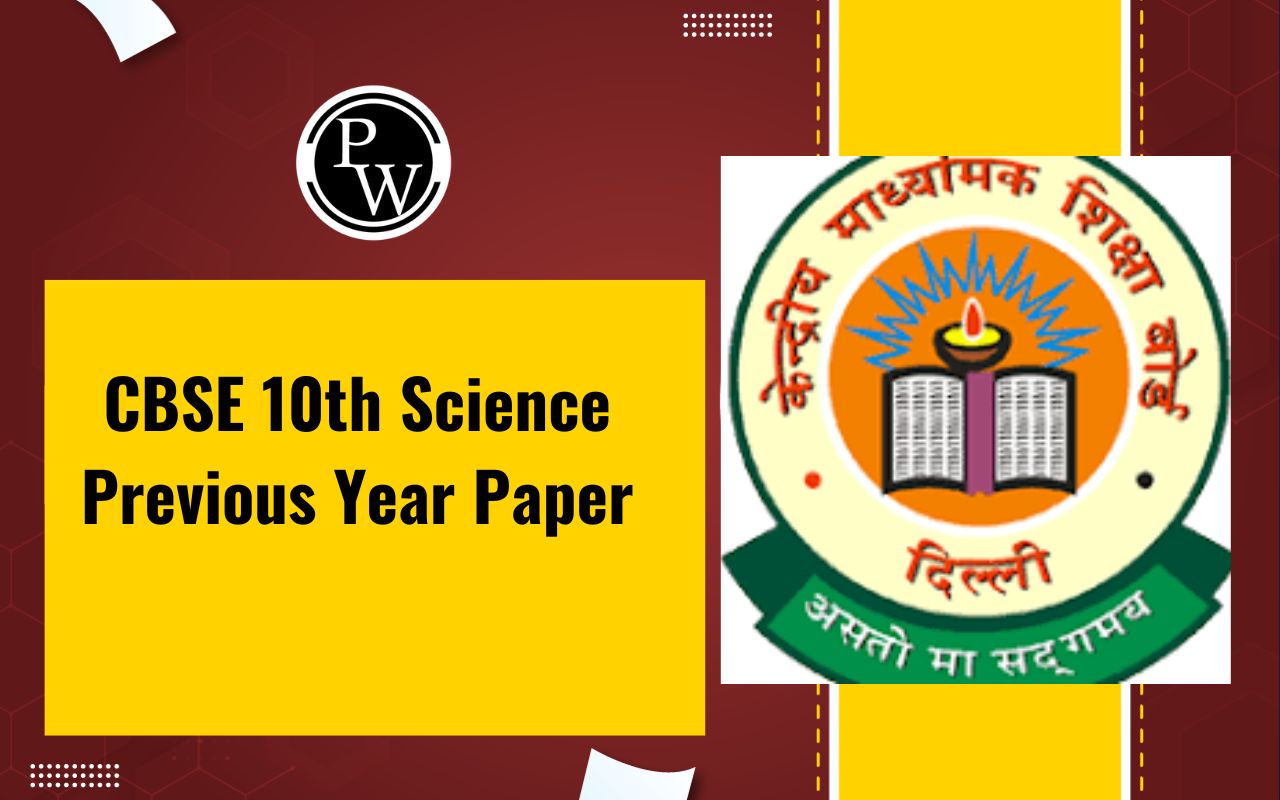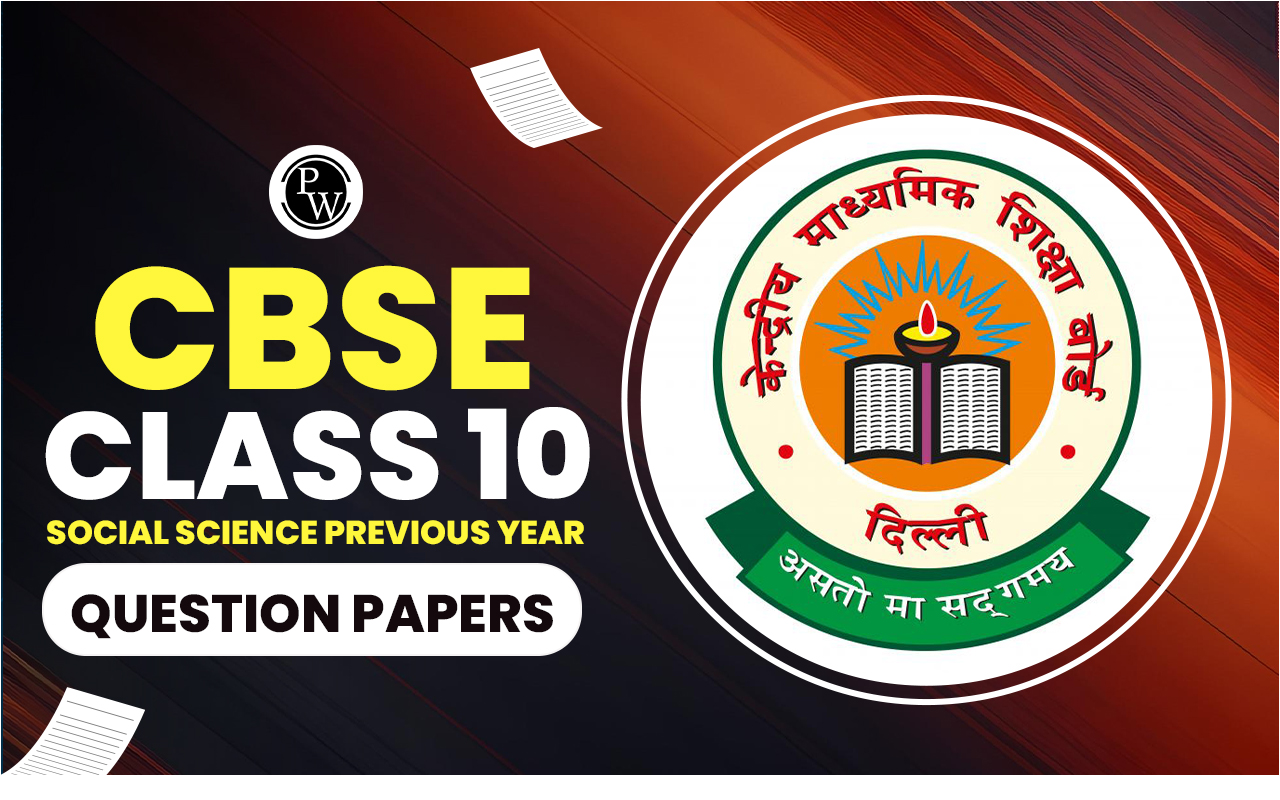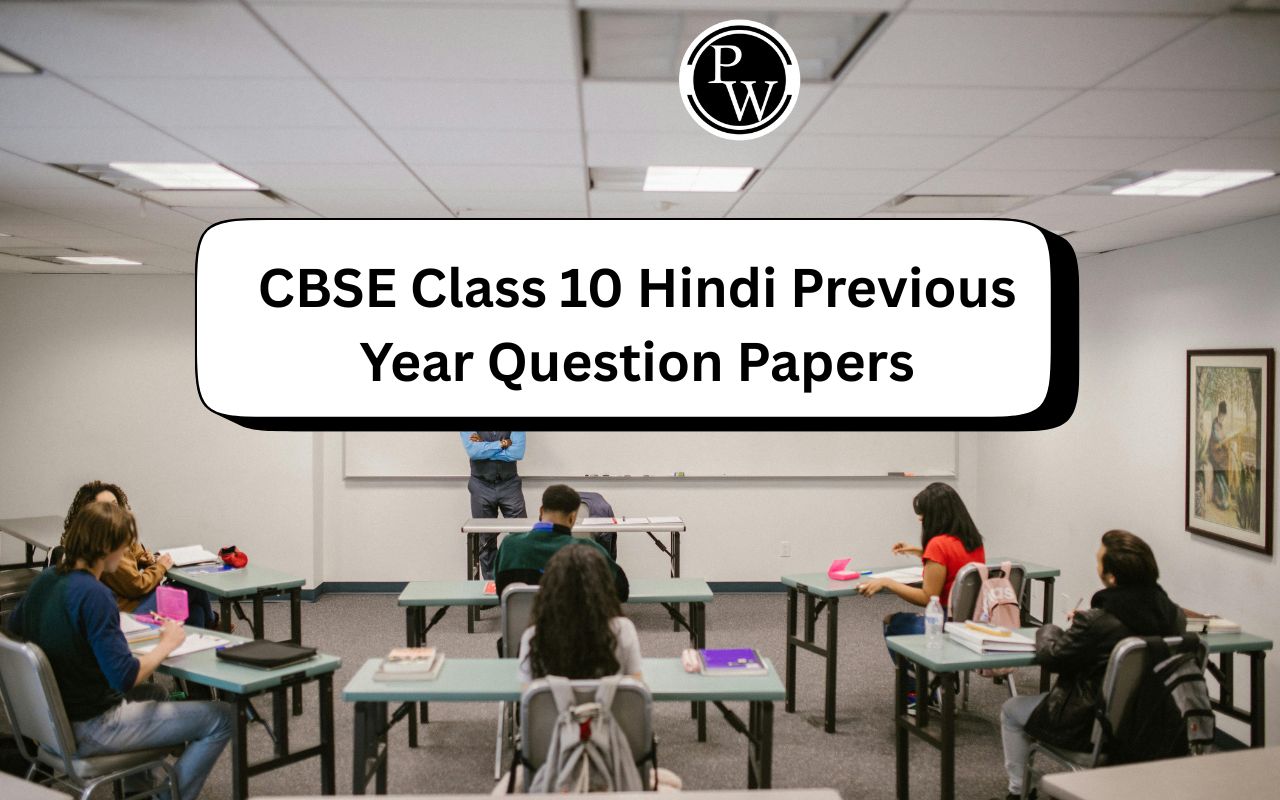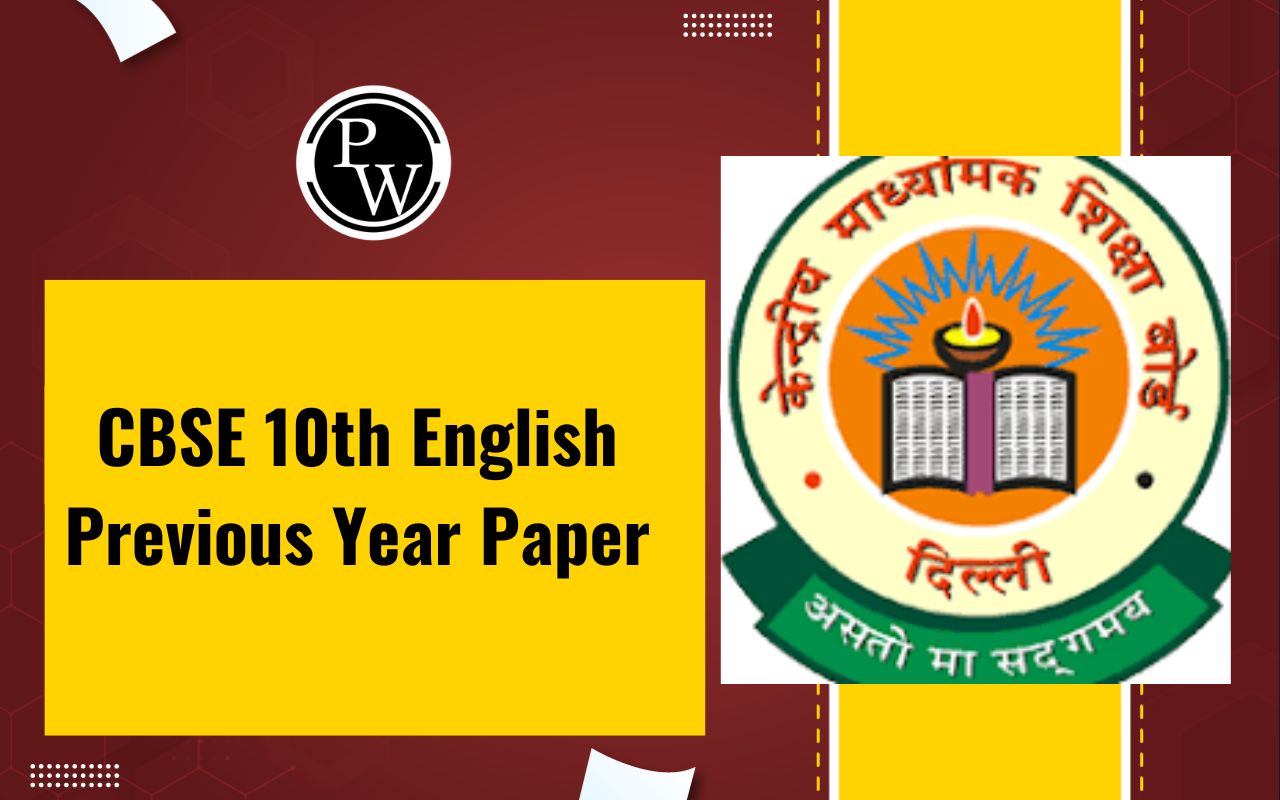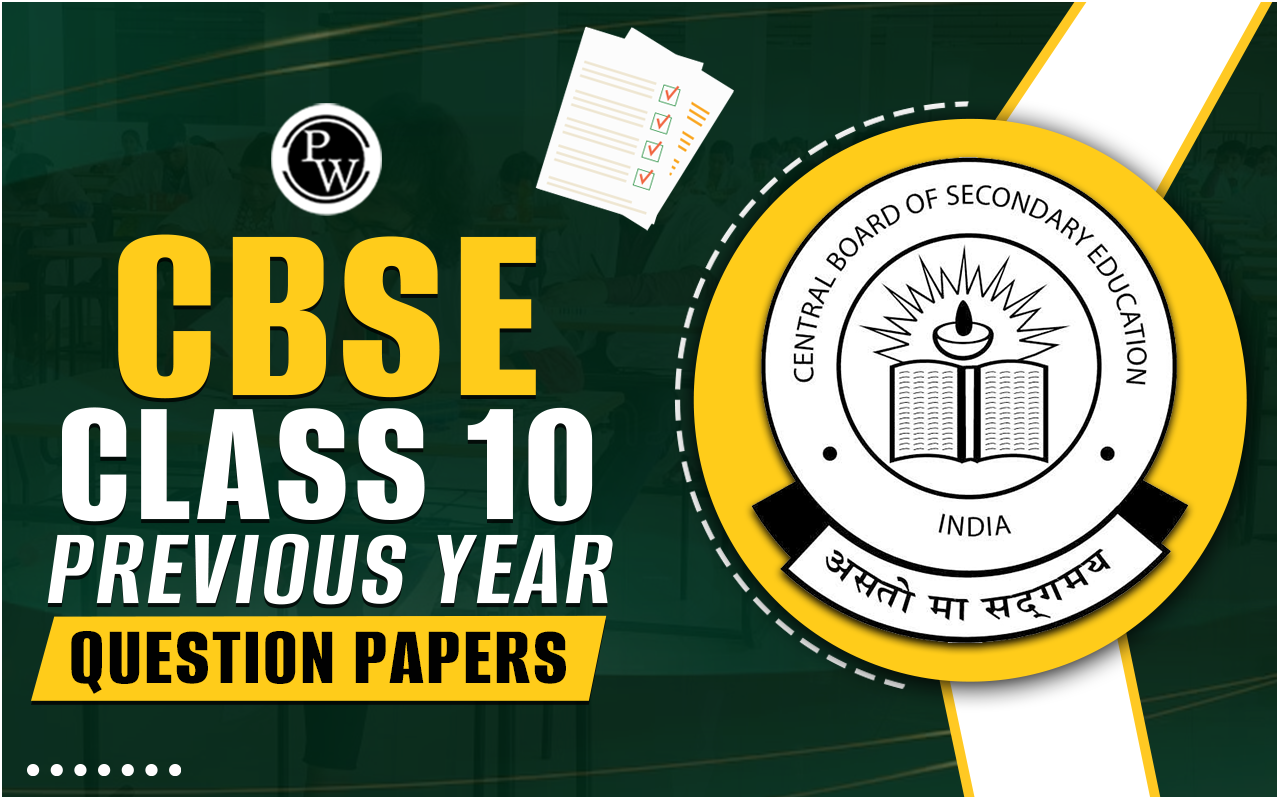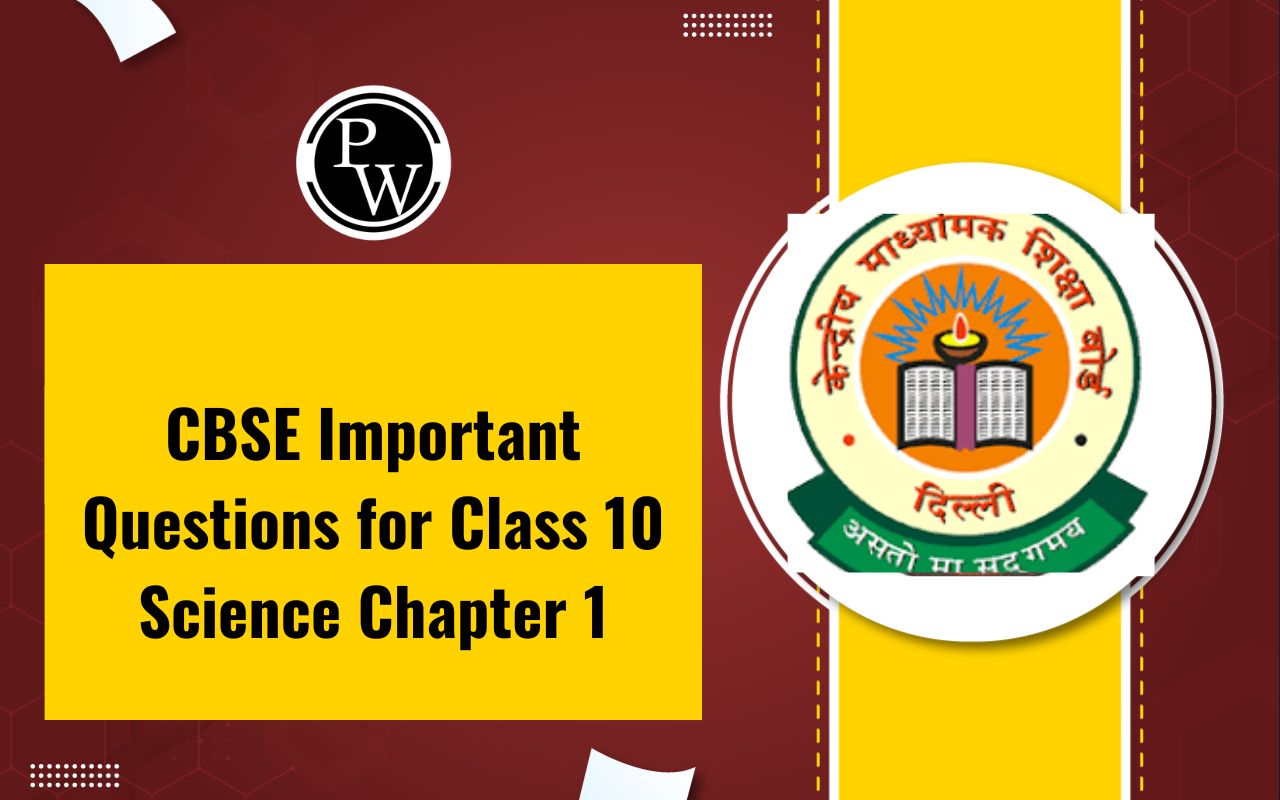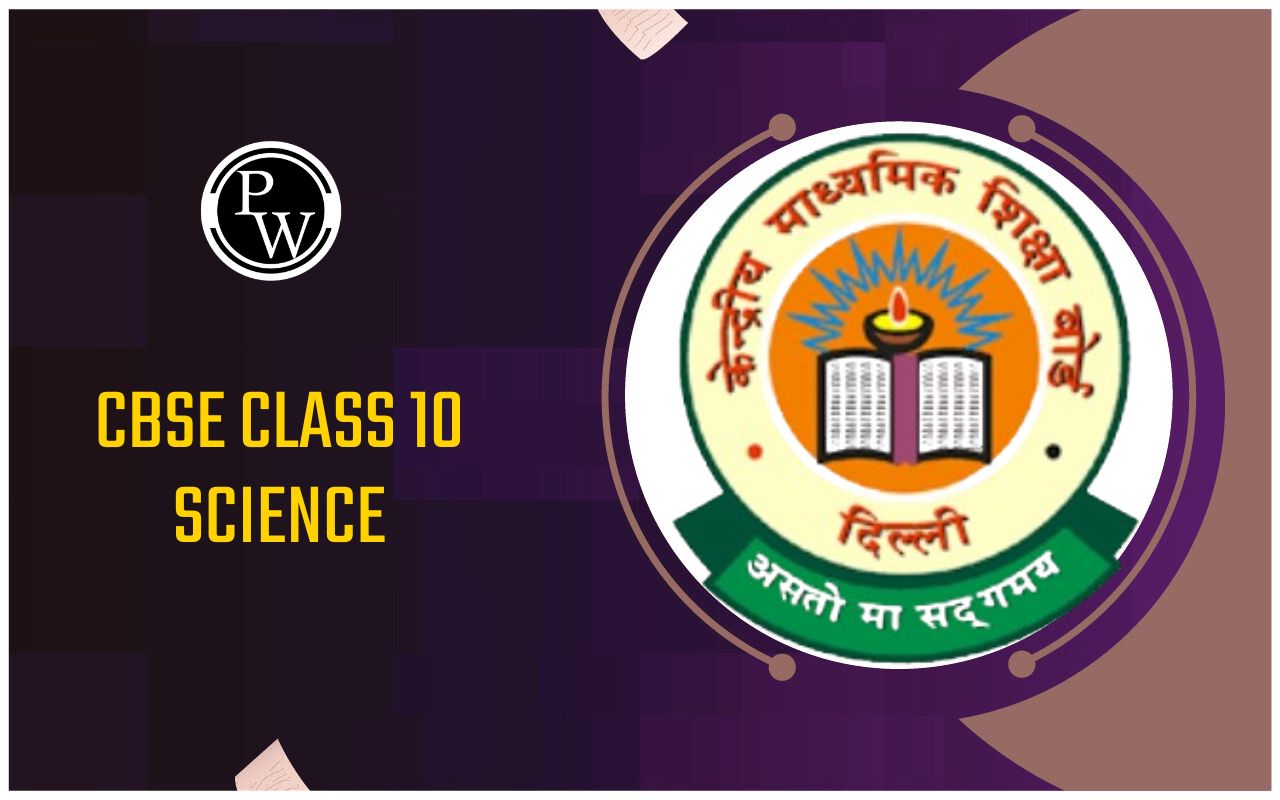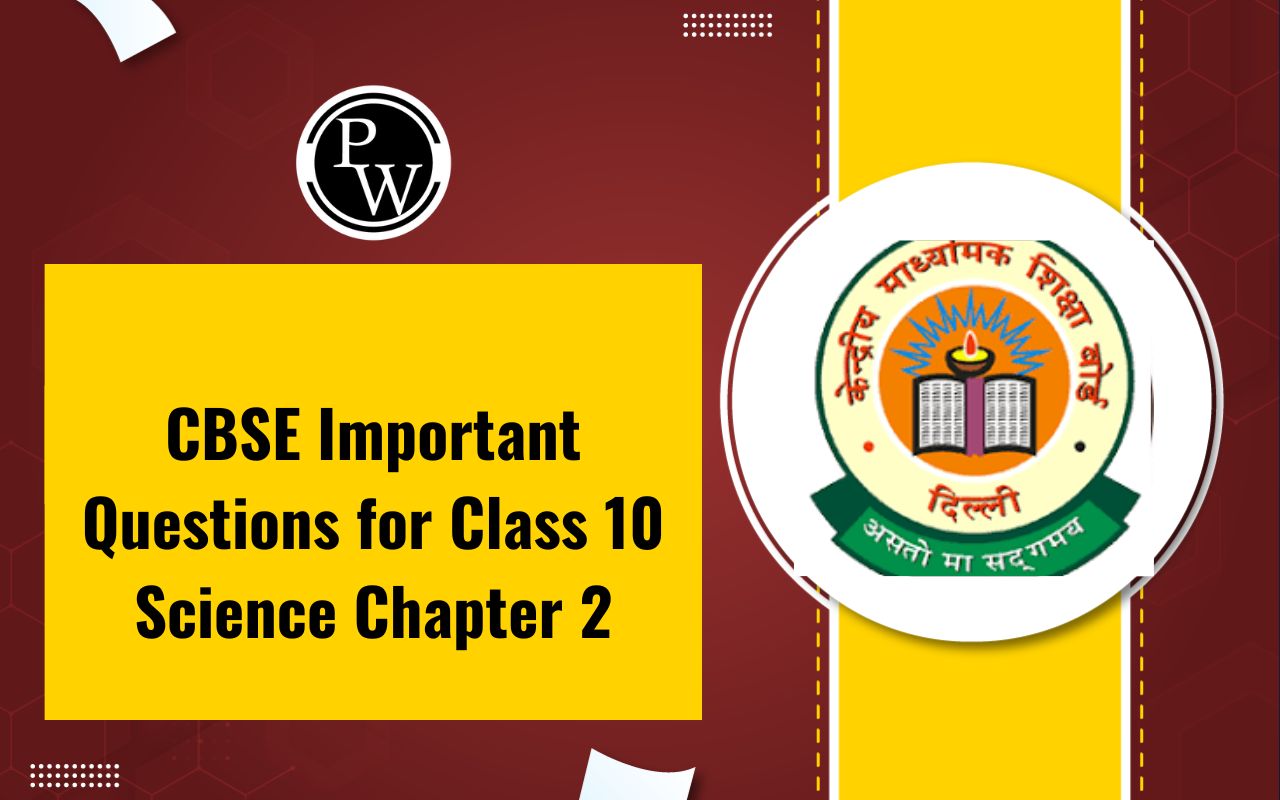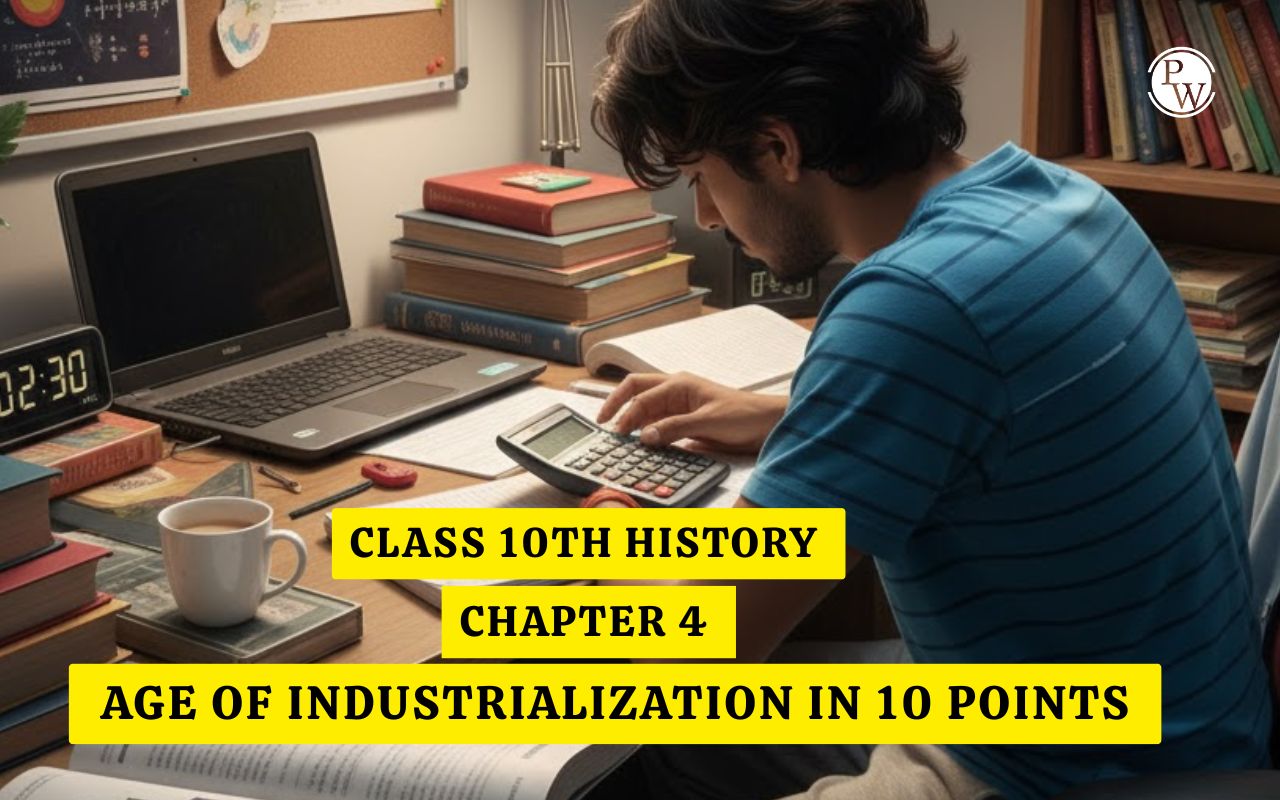
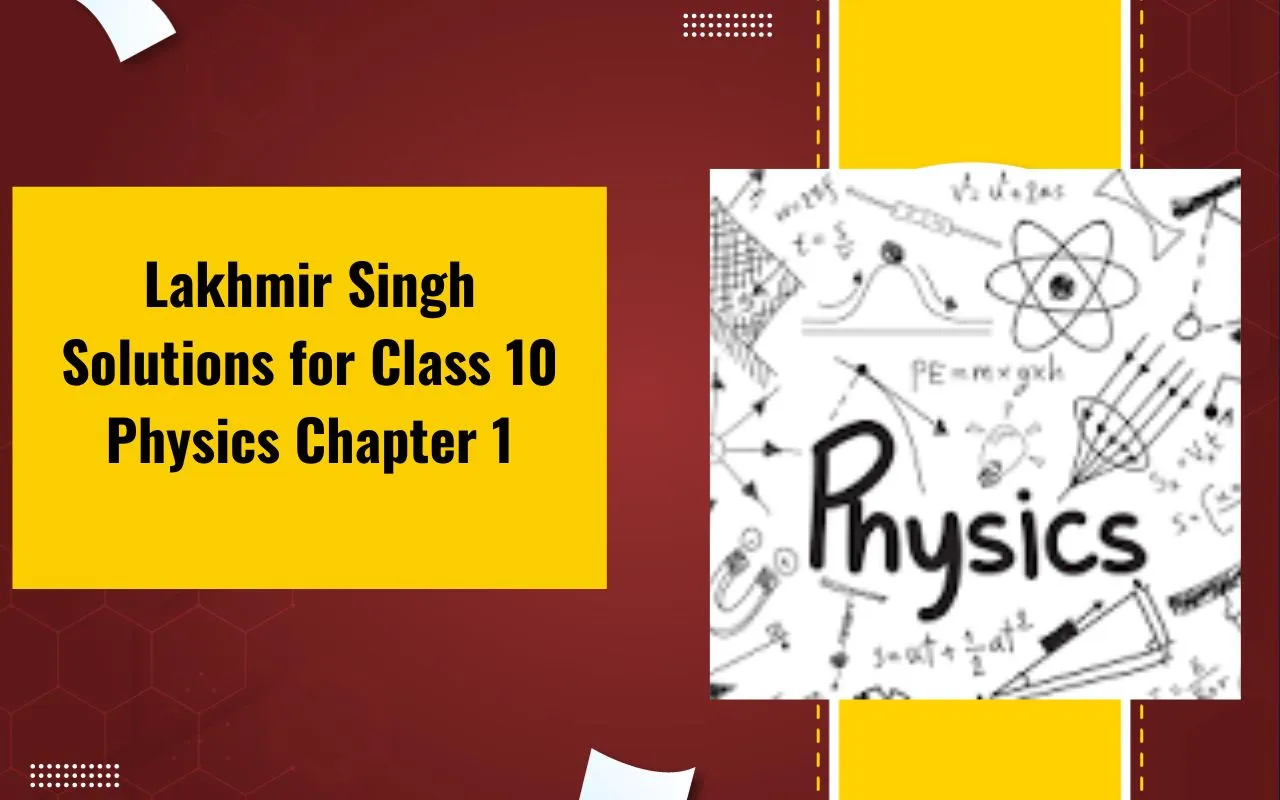
Lakhmir Singh Solutions for Class 10 Physics Chapter 1: We provide well-structured and accurate solutions for Very Short Answer Type Questions, Short Answer Type Questions, Long Answer Type Questions, and Numericals from Lakhmir Singh Class 10 Physics Chapter 1 Electricity. These solutions cover essential topics such as electric charge, current, potential difference, Ohm’s Law, resistance, resistivity, series and parallel combinations of resistors, heating effects of current, and electric power. Each question is solved with clear explanations and step-by-step calculations to enhance understanding and boost exam preparation.
Lakhmir Singh Solutions for Class 10 Physics Chapter 1 Overview
Chapter 1: Electricity in Lakhmir Singh's Class 10 Physics textbook introduces students to the fundamental concepts of electricity, its properties, and its applications. This chapter explains how electric charges and currents work, how potential difference is measured, and the relationship between voltage, current, and resistance as described by Ohm’s Law.
Students learn about resistance and resistivity, including their dependence on material, temperature, length, and cross-sectional area. The chapter also covers the combination of resistors in series and parallel, highlighting how these arrangements affect the total resistance in a circuit.
The chapter explains the heating effect of electric current, its practical applications, and the calculation of heat generated in a circuit. The concept of electric power is discussed, along with its mathematical formulas and practical implications.
The Lakhmir Singh Solutions provide step-by-step explanations and well-organized answers to help students build a clear understanding of each concept. These solutions are structured to enhance problem-solving skills and prepare students effectively for board exams.
Lakhmir Singh Solutions for Class 10 Physics Chapter 1: Electricity PDF Download
The comprehensive solutions for Lakhmir Singh Class 10 Physics Chapter 1: Electricity are designed to help students understand complex concepts with ease. These solutions cover all topics like electric charge, current, potential difference, Ohm’s Law, resistance, series and parallel circuits, and electric power, providing clear explanations and step-by-step answers. To make your preparation even more effective, you can download the complete PDF of Lakhmir Singh Solutions for Class 10 Physics Chapter 1 from the link provided below.
Lakhmir Singh Solutions for Class 10 Physics Chapter 1 Electricity PDF Download
Lakhmir Singh Solutions for Class 10 Physics Chapter 1
Here are the solutions for Very Short Answer Type Questions, Short Answer Type Questions, Long Answer Type Questions, and Numericals from Chapter 1 Electricity. These solutions provide clear explanations, formulas, and step-by-step calculations to help you thoroughly understand the concepts of electric charge, current, potential difference, Ohm’s Law, resistance, series and parallel circuits, heating effects of electric current, and electric power.
Very Short Answer Type Questions
Q1. By what other name is the unit joule/coulomb called?
Answer:
The other name of the unit joule/coulomb is volt.
Volt is the SI unit of electric potential or of electromotive force. It is represented by the letter V. Volt is a representation of the potential difference between the two points of a current-carrying wire of 1 ampere such that when the power dissipates between these two points, it is equal to 1 watt.
Q2. Which of the following statements correctly defines a volt?
a) A volt is a joule per ampere
b) A volt is a joule per coulomb
Answer:
The correct statement that defined a volt is b) A volt is a joule per coulomb
Volt is a joule per coulomb because a joule is a unit of work done, while a coulomb is a unit for the charge. The ratio of work done to the charge is the definition of potential, and the volt is the unit of potential difference. Therefore, it can be said that one joule per coulomb is equal to the unit of the potential difference, which is also equal to one volt.
(1 Joule)/(1Coulomb) = 1Volt
Q3. a) What do the letters p.d stand for?
b) Which device is used to measure p.d?
Answer:
a) p.d stands for potential difference
Potential difference is defined as the difference between the energy carried by the two points in the circuit. Potential difference is also equal to the product of the amount of current and the resistance. Following is the formula used for calculating potential difference:
V = I × R
Where,
-
V is the voltage
-
I is the current
-
R is the resistance
b) Voltmeter is used for measuring p.d
An instrument that is used for measuring the voltage in volts is known as a voltmeter. Letter V is used to represent the voltmeter between the two terminals.
Q4. What is meant by saying that the electric potential at a point is 1 volt?
Answer:
The electric potential at a point is 1 volt means 1 joule of work is done in moving 1 unit of positive charge from infinity to that particular point.
Q5. How much work is done when the one-coulomb charge moves against a potential difference of 1 volt?
Answer:
Given,
Potential difference = 1V
Charge to be moved = 1C
To find,
Work done = ?
We know that the work done is given as:
Work done = Potential difference × Charge moved
= 1 × 1 = 1J
Therefore, 1J of work is done to move 1C charge with 1V potential difference.
Q6. What is the SI unit of potential difference?
Answer:
The SI unit of potential difference is volt. It is the difference of potential that one ampere of current is carried against one-ohm resistance.
Q7. How much work is done in moving a charge of 2C across two points having a potential difference of 12V?
Answer:
Given,
Potential difference = 12V
Charge moved = 2C
To find,
Work done = ?
We know that the work done is given as:
Work done = p.d × charge moved
= 12 × 2 = 24J
Therefore, 24J of work is done to move a charge of 2C with a potential difference of 12V.
Q8. What is the unit of electric charge?
Answer:
Coulomb is the unit of electric charge. Coulomb is defined as the charge that is transferred with the help of a steady current of one ampere in one second.
Q9. Define one coulomb charge.
Answer:
One coulomb charge is defined as the quantity of charge that exerts a force of 9 × 109 Newton on a charge which is placed at a distance of 1m from it.
Q10. Fill in the following blanks with suitable words:
a) Potential difference is measured in …………… by using a ……….. placed in …………… across a component.
b) Copper is a good ……….. plastic is an …………….
Answer:
a) Volts, voltmeter, parallel
b) Conductor, insulator
Short Answer Type Questions
Q11. What is meant by conductors and insulators? Give two examples of conductors and two insulators.
Answer:
Conductors are defined as the materials through which electric current can flow. Almost all metals are examples of conductors. Following are the examples of conductors:
Copper, silver
Insulators are defined as materials through which electric current cannot flow. Non-metals are examples of insulators. Following are the examples of insulators:
Plastic, cotton
Q12. Which of the following are conductors, and which are insulators?
Sulphur, silver, copper, cotton, aluminium, air, nichrome, graphite, paper, porcelain, mercury, mica, Bakelite, polythene, manganin
Answer:
Conductor: Silver, copper, aluminium, nichrome, graphite, mercury, manganin
Insulator: Sulphur, cotton, air, paper, porcelain, mica, Bakelite, polythene
Q13. What do you understand by the term “electric potential” at a point? What is the unit of electric potential?
Answer:
The electric potential at a point is defined as the work done to move a unit of positive charge from infinity to a particular point. Volt is the unit of electric potential.
Q14. a) State the relation between potential difference, work done, and charge moved.
b) Calculate the work done in moving a charge of 4 Coulomb from a point at 220 Volts to another point at 230 Volts.
Answer:
a) Potential difference = (Work done)/(Charge moved)
b) Given,
V1 = 220V
V2 = 230V
Charge moved = 4C
Potential difference = ?
We know that potential difference is:
Potential difference = V2 – V1
= 230 – 220 = 10
Work done = Potential difference × charge moved
= 10 × 4 = 40J
Therefore, the work done is 40J to move charges.
Q15. a) Name a device that helps to measure the potential difference across a conductor.
b) How much energy is transferred by a 12V power supply to each coulomb of charge that it moves around a circuit?
Answer:
a) Voltmeter
b) Given,
Potential difference = 12V
Charge moved = 1C
Work done = ?
We know that the work done is given as:
Work done = Potential difference × Charge moved
= 12 × 1 = 12 Joules
Therefore, 12J work is done on a 1C charge.
Page No.6
Long Answer Type Questions
Q16. a) What do you understand by the term “potential difference”?
b) What is meant by saying that the potential difference between two points is 1 volt?
c) What is the potential difference between the terminals of a battery if 250 joules of work is required to transfer 20 coulombs of charge from one terminal of the battery to the other?
d) What is a voltmeter? How is a voltmeter connected in the circuit to measure the potential difference between two points? Explain with the help of a diagram.
e) State whether a voltmeter has a high resistance or a low resistance. Give a reason for your answer.
Answer:
a) The amount of work done in moving a unit of positive charge from one point to the other is defined as the potential difference between the two points.
b) The potential difference between two points is 1 volt means 1 joule of work is done to move 1 coulomb of electric charge from one point to another.
c) Given,
Work done = 250J
Charge moved = 20C
Potential difference = ?
We know that potential difference is given as:
Potential difference = (Work done)/(Charge moved)
= (250)/(20) = 12.5
Therefore, 12.5J of potential difference is required for moving 1 coulomb of charge when the work done is 250J.
d) A voltmeter is defined as a device that is used for measuring the potential difference between the two points in an electric circuit. The voltmeter is usually connected parallel to the two points where the potential difference needs to be measured.
e) The voltmeter has a high resistance because the voltmeter needs to take a negligible amount of current from an electric circuit.
Multiple Choice Questions
Q17. The work done in moving a unit charge across two points in an electric circuit is a measure of:
a) Current
b) Potential difference
c) Resistance
d) Power
Answer:
The correct option is b) Potential difference.
Potential difference is the measure of the work done in moving a unit charge across two points in an electric circuit.
Q18. The device used for measuring potential difference is known as:
a) Potentiometer
b) Ammeter
c) Galvanometer
d) Voltmeter
Answer:
The correct option is d) Voltmeter
Voltmeter is a device that is used for measuring the potential difference.
Q19. Which of the following units could be used to measure electric charge?
a) Ampere
b) Joule
c) Volt
d) Coulomb
Answer:
The correct option d) Coulomb
Coulomb is the unit that is used for measuring electric charge.
Q20. The unit for measuring potential difference is:
a) Watt
b) Ohm
c) Volt
d) kWh
Answer:
The correct option is c) Volt
Volt is the unit used for measuring the potential difference.
Q21. One coulomb charge is equivalent to the charge obtained in:
a) 2.6×1019 electrons
b) 6.2×1019 electrons
c) 2.65×1018 electrons
d) 6.25×1018 electrons
Answer:
The correct option is d) 6.25×1018 electrons
There are 6.25×1018 electrons in one coulomb charge.
High Order Thinking Skills
Q22. Three 2V cells are connected in series and used as batteries in a circuit.
a) What is the p.d at the terminals of the battery?
b) How many joules of electric energy does 1C gain on passing through one cell and all three cells?
Answer:
a) When three cells with 2 volts respectively are connected in series for the construction of the battery, then the total potential difference between the terminals of the battery will be 6V.
b) For one cell:
Given,
Potential difference = 2V
Charge moved = 1C
Work done = ?
We know that work done is given as:
Work done = potential difference × charge moved
= 2 × 1 = 2J
Therefore, work done to move a charge of 1C with the potential difference of 2V is 2J.
For three cells:
Given,
Potential difference = 6V
Change moved = 1C
Work done = ?
We know that the work done is given as:
Work done = Potential difference × charge moved
= 6 × 1 = 6J
Therefore, to move 1C charge with a potential difference of 6V, the work done is 6J
Benefits of Solving Lakhmir Singh Solutions for Class 10 Physics Chapter 1
Comprehensive Understanding: The solutions provide detailed explanations for all topics like electric charge, current, potential difference, Ohm’s Law, resistance, and electric power, ensuring a thorough understanding of the concepts.
Step-by-Step Solutions: Every question is solved with clear, step-by-step explanations, making it easier for students to grasp difficult topics and improve problem-solving skills.
Exam-Oriented Preparation: The solutions are structured according to the exam pattern, focusing on Very Short Answer, Short Answer, Long Answer, and Numerical Questions to prepare students effectively for board exams.
Clarity of Concepts: The explanations are straightforward, which helps students build a strong foundation and clear their doubts efficiently.
Practice for Numerical Problems: The solutions include various numerical problems, enhancing calculation skills and boosting confidence in tackling complex problems.
Improved Time Management: Practicing these solutions helps students learn how to answer questions quickly and accurately during exams.
Self-Assessment: Students can check their progress by comparing their answers with the provided solutions and identifying areas that need improvement.
Lakhmir Singh Solutions for Class 10 Physics Chapter 1 FAQs
What topics are covered in Lakhmir Singh Solutions for Class 10 Physics Chapter 1?
How do Lakhmir Singh Solutions help in exam preparation?
Are numerical problems included in the solutions?

